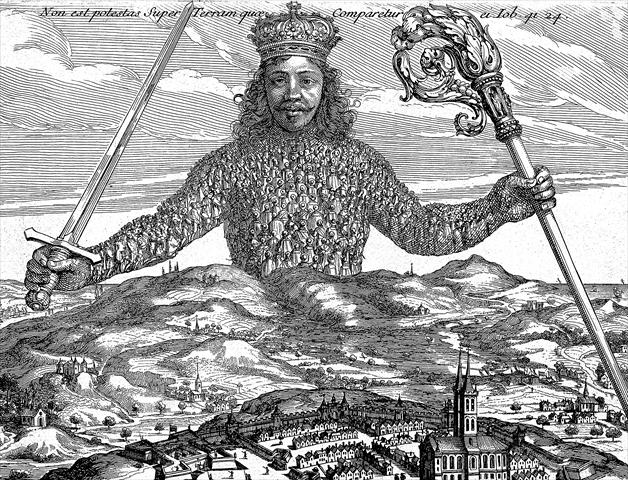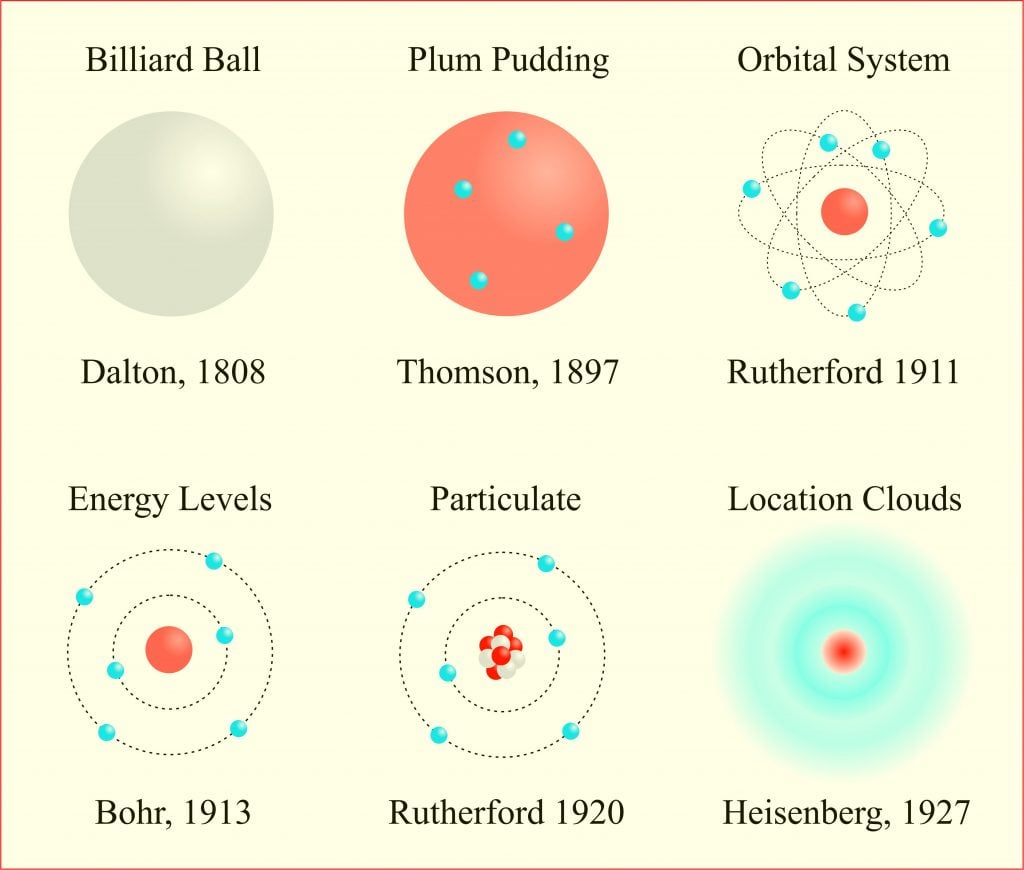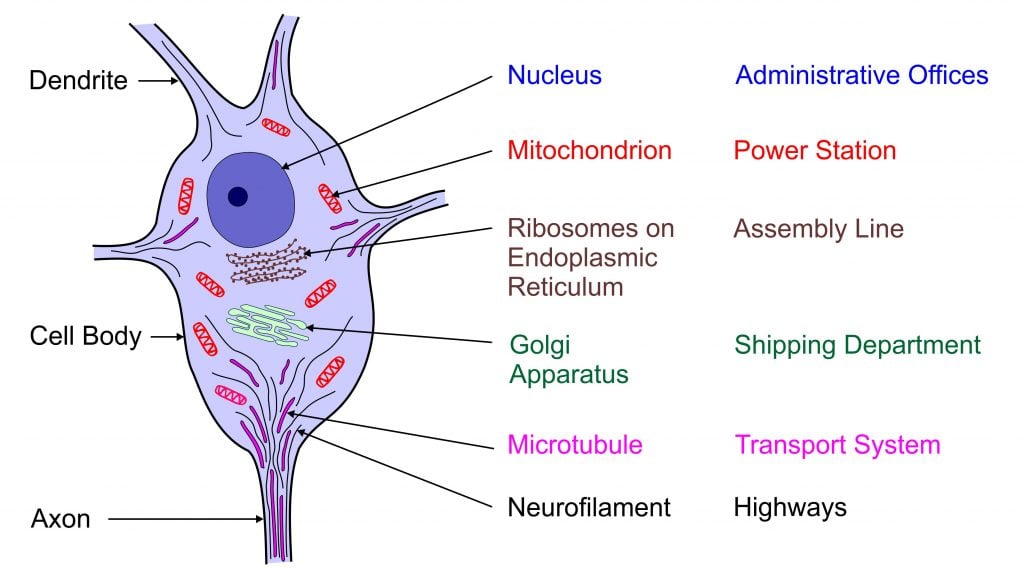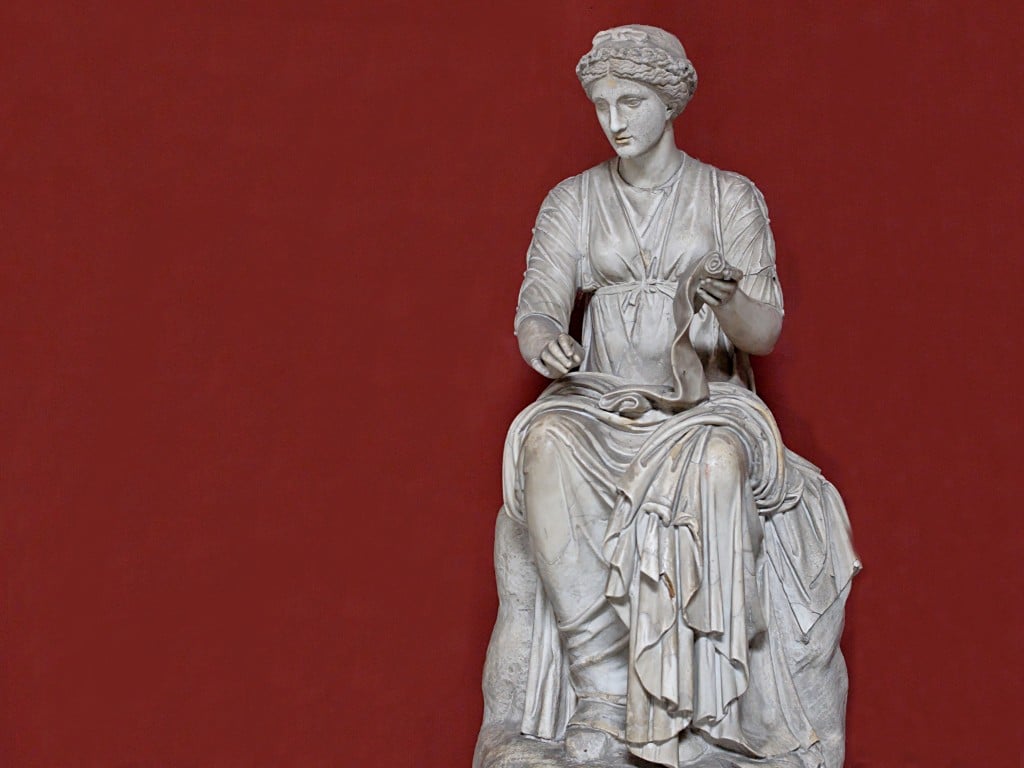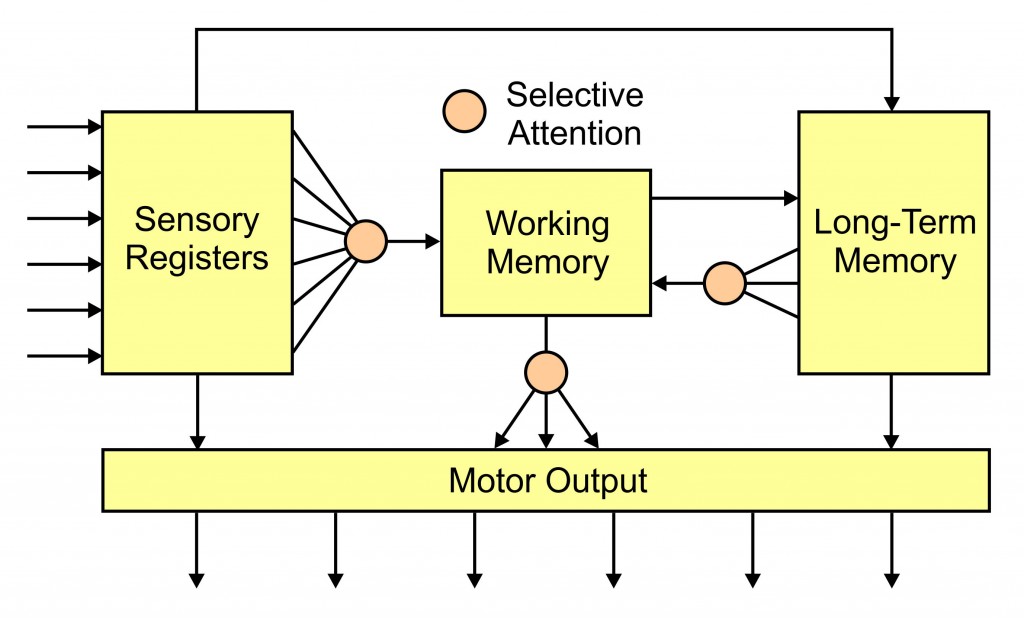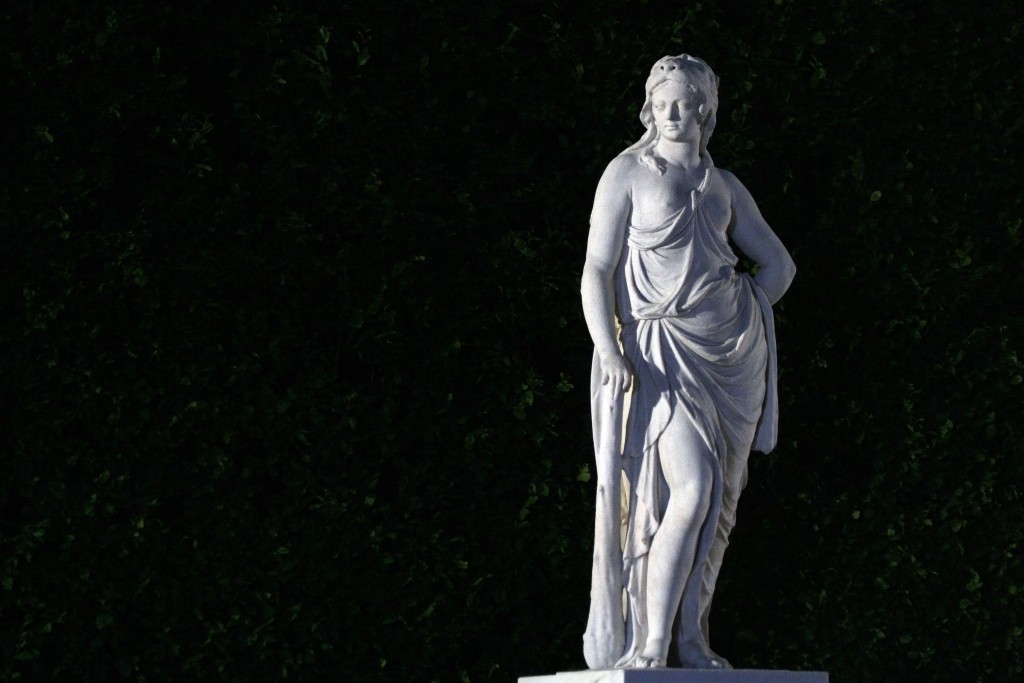Metaphor and Meaning
At the close of the opening scene of Shakespeare’s Hamlet, Horatio notices the arrival of the dawn
But look, the morn, in russet mantle clad,
Walks o’er the dew of yon high eastward hill.
(Hamlet, I-1: 165-6)
No one is on the hill. Horatio is speaking metaphorically, describing the dawn as though it were a person. His words relax the tension of what has just happened. He and his colleagues have just seen the spirit of Hamlet’s father wandering in the real world where it should not be. Terror is in the air. At this moment, however, Horatio does not see a real person on the hill – this is how the dawn seems in his imagination. He takes comfort in metaphor.
Figures of Speech
According to the Oxford English Dictionary (1989), a figure of speech is
any of the various ‘forms’ of expression, deviating from the normal arrangement or use of words, which are adopted in order to give beauty, variety, or force to a composition
And a metaphor is
a figure of speech in which a name or descriptive word or phrase is transferred to an object or action different from, but analogous to, that to which it is literally applicable.
The word derives from the Greek words meta (after, beyond) and phorein (carry, bear)
A clearer sense of metaphor is that of Richards (1936, p 93)
In the simplest formulation, when we use a metaphor we have two thoughts of different things active together and supported by a single word, or phrase, whose meaning is the resultant of their interaction.
Richards identified the two thoughts as the “tenor” the “vehicle.” These he does not define, but the tenor is basically the original idea, and the vehicle is the new idea that brings to light or accentuates some aspects of the original. Thus when Romeo says that Juliet is the sun, Juliet is the tenor and the sun the vehicle. In cognitive linguistics, the tenor is generally termed the “target” and the vehicle is the “source” (Kövecses, 2002, p 4).
Black (1993) proposed that the interaction described by Richards is the projection of some characteristics of the vehicle upon the tenor. The mystery of metaphor concerns which characteristics get projected and which do not.
We often differentiate metaphor from simile. A simile makes a direct comparison between tenor and vehicle, using terms such as “like” or “as.” A simile could be considered as a tentative metaphor, or a metaphor as an elliptical simile. Metaphor is far more powerful. Romeo could have said that Juliet was like the sun, but that would not have expressed his passion. Poets often use both metaphor and simile together. Enobarbus describes Cleopatra’s arrival:
The barge she sat in, like a burnish’d throne,
Burned on the water
(Anthony and Cleopatra, II-2: 202-3)
The “burnish’d throne” is a simile, but its burning is a metaphor.
Types of Tropes
The word “trope” (Greek tropos turn) is used to describe figures of speech based on comparisons or associations. As well as metaphor and simile, we have:
allegory – a metaphor wherein the comparison is extended into a story. Bunyan’s Pilgrim’s Progress considers the life of a Christian in terms of the journey of one particular man from sin to salvation
analogy – an extended simile used to explain one process or event in terms of another that is more clearly understood.
conceit – a metaphor (or simile) wherein the comparison is highly unusual and intricately detailed.
metonymy – the use of one entity to identify another (meta beyond + onymia name). This occurs in various ways (Kövecses, 2002, pp 143-162): a part can represent the whole (“head” instead of person or animal) or vice versa (“law” instead of a policeman); a container can indicate its contents (“bottle” instead of alcohol); a piece of clothing can stand for the person who wears it (“suits” for lawyers or businessmen); an instrument can mean what it does (“pen” instead of writing); and a place can represent the people who work there (the “White House” instead the President of the United States). Metonymy can highlight a particular aspect of what is being described: to call businessmen “suits” suggests that they all dress in the same way and lack individuality. Metaphors differ from metonymy by bringing completely novel ideas into play: to call businessmen “predators” suggests that they are out for blood. Kövecses describes this difference by proposing that metonymy stays within a single cognitive domain whereas metaphor crosses into another domain. He also suggests that a simple difference between metonymy and metaphor is that only the latter can be meaningfully recast as a simile. One would not say that businessmen are “like suits,” but it is easy to claim that they are “like predators.”
symbol (Greek syn together + ballo throw)– a simple metaphorical expression typically used as a stand-in for an abstract idea (“cross” for the Christian religion, “rose” for love). Symbols can enhance the emotional impact of a statement by making the idea concrete.
synecdoche (Greek syn together + ekdoche interpret) has been variably defined over the years. It is usually considered as a subclass of metonymy wherein the whole is signified by the part.
Poetry and Language
Poetry is the natural home of metaphor. Poets portray the world in ways that help us to see what we have not noticed before, and to understand what we previously could not. They teach us how best to express ideas, and provide emotional depth for our experiences. At least this is what Shelley (1821) proposed:
They measure the circumference and sound the depths of human nature with a comprehensive and all-penetrating spirit, and they are themselves perhaps the most sincerely astonished at its manifestations; for it is less their spirit than the spirit of the age. Poets are the hierophants of an unapprehended inspiration; the mirrors of the gigantic shadows which futurity casts upon the present; the words which express what they understand not; the trumpets which sing to battle and feel not what they inspire; the influence which is moved not, but moves. Poets are the unacknowledged legislators of the world.
This is hyperbole. However, much of our normal language evolves from metaphor. The use of “leg” in relation to a table was once metaphorical, but is now just one of the many accepted meanings of the word “leg.” Etymology records the passage from figurative to literal. Present meaning is sometimes equivalent to the metaphorical origin (“metaphor”- carried over), sometimes related (“malaria” – bad air) and sometimes almost completely unrelated (“muscle” – little mouse).
Normal human language is replete with metaphorical systems (Reddy, 1993; Gibbs, 1994; Lakoff and Johnson, 2003; Kövecses, 2002). Life is a journey; argument is war; ideas are food; relations are a game. The following illustrates one such metaphorical system – theories (and arguments) are buildings:
Is that the foundation for your theory? The theory needs more support. The argument is shaky. We need some more facts or the argument will fall apart. We need to construct a strong argument for that. I haven’t figured out yet what the form of the argument will be. Here are some more facts to shore up the theory. We need to buttress the theory with solid arguments. The theory will stand or fall on the strength of that argument. The argument collapsed. They exploded his latest theory. We will show that theory to be without foundation. So far we have put together only the framework of the theory. (Lakoff and Johnson, 2003, p 46)
Although prose and poetry both make extensive use of metaphor, poetry remains apart from normal language in its intensity and novelty (Donoghue, 2014). When Shakespeare’s Cleopatra puts the asp to her breast, she says
Come, thou mortal wretch,
With thy sharp teeth this knot intrinsicate
Of life at once untie.
(Anthony and Cleopatra, V-2: 330-302)
The central metaphor is that life is a knot that death can untie. However, this poetry is more than metaphor. Shakespeare invented the word “intrinsicate” probably as a combination of “intricate” and “intrinsic.” Perhaps “transient” can also be heard within the word. And the metaphor of “knot” brings “not” immediately to mind – life is defined by its negation.
Metaphor and Truth
Metaphor has an ambivalent relationship with truth (Searle, 1993). A metaphorical statement is not literally true. Juliet is not the sun. Yet literal falseness is not a defining aspect of a metaphor. The statement ‘Juliet is not the sun.’ is literally true but can still be metaphorical – perhaps she shines more subtly than the brazen sun. Even when one makes a comparison in the form of a simile, truth is still not certain. We do not know what determines that something can be “seen as” something else (Zwicky, 2003).
Most discussions of metaphor, however, contend that a metaphor can express truth –“ring true” – despite being literally false (Binkley, 1974). The meaning of a statement depends on much more that its literal translation. The intent of the speaker, the context of the statement and the sensitivity of the hearer all contribute to meaning (Speaks, 2014). And whether or not that meaning is true depends on the shared knowledge of speaker and hearer. So Davidson (1978) insists that the speaker of metaphor means what he or she says. In respect to meaning and truth metaphor is then no different from other modes of expression.
Words Proper
The subtle relationship of metaphor to truth, however, made some of the early modern philosophers skeptical about anything that could not just be said in plain English.
Thomas Hobbes (1651) said that man excelled all other animals in his ability to determine the consequences of things and to express these consequences in words. However, he found that this privilege was allayed by a tendency to absurdity, a characteristic shared by no other living creature. Among the causes of absurdity are
the use of Metaphors, Tropes, and other Rhetoricall figures, in stead of words proper. For though it be lawfull to say, (for example) in common speech, the way goeth, or leadeth hither, or thither, The Proverb sayes this or that (whereas wayes cannot go, nor Proverbs speak); yet in reckoning, and seeking of truth, such speeches are not to be admitted. (Chapter V).
Yet this comes from the author who used the metaphor of Leviathan to describe the state, wherein the residents transfer all power to a sovereign in return for the maintenance of civil order. The frontispiece of his book – an engraving by Abraham Bosse shows the sovereign, composed of all his people, wielding the sword of civil power and the crozier of religious belief. The Latin inscription quotes from the Book of Job (41:24): Non Est potestas Super Terram quae Comparetur ei (There is no power on earth which can be compared to him).
In his Essay Concerning Human Understanding (1690), John Locke proposed that figurative speech and allusion are wholly to be avoided in any attempt to describe the truth:
Since Wit and Fancy finds easier entertainment in the World, than dry Truth, and real Knowledg, figurative Speeches, and allusion in Language, will hardly be admitted, as an Imperfection or Abuse of it. I confess in Discourses, where we seek rather Pleasure and Delight than Information and Improvement, such Ornaments as are borrowed from them, can scarce pass for Faults. But yet, if we would speak of Things as they are, we must allow, that all the Art of Rhetorick, besides Order and Clearness, all the artificial and figurative Application of Words Eloquence hath invented, are for nothing else but to insinuate wrong Ideas, move the Passions, and thereby mislead the Judgment, and so indeed are perfect cheat: And therefore however laudable or allowable Oratory may render them in Harangues and popular Addresses, they are certainly, in all Discourses that pretend to inform or instruct, wholly to be avoided ; and where Truth and Knowledg are concerned, cannot but be thought a great Fault, either of the Language or Person that makes use of them. (III: X: 34)
However, this aversion to figurative language did not stop the author from describing the mind of man using multiple metaphors:
Let us then suppose the mind to be, as we say, white paper, void of all characters, without any ideas; how comes it to be furnished? Whence comes it by that vast store which the busy and boundless fancy of man has painted on it, with an almost endless variety. (II: 1: 2)
Metaphors in Science
Scientists are much less skeptical of using figurative language than these early modern philosophers. Metaphor is the way to see what is invisible. Analogy is the way to explain how things work.
Many different metaphors have been used to illustrate the structure of the atom. These are illustrated in the following figure, which shows the structure of the carbon atom containing 6 protons, 6 neutrons and 6 electrons. Dalton’s initial idea was that atoms were like billiard balls. Thomson discovered electrons and proposed that these particles were stuck in the atom like negative plums in a positive pudding. Rutherford determined that most of the atom was space and concluded that the electrons moved in orbits around a central nucleus just like planets move around the sun. Bohr proposed that electrons could only orbit at specific distances from the nucleus. Movement from one orbit to another was associated with release or absorption of energy. Rutherford later proposed that the nucleus contained both neutrons and protons. Heisenberg demonstrated that an electron had no specific location but rather existed as a cloud of possible locations. Schrödinger found that these clouds were defined by wave functions. These equations gave probability-shapes that are called “orbitals.”
Other metaphors can help explain the workings of the different organelles in a cell. The following views the neuron in terms of a manufacturing company.
Metaphor in Religion
Religious scripture is permeated with metaphor (Soskice, 1985). How else can one describe what is beyond human understanding. The most famous metaphor for God in the Judeo-Christian tradition is that of the Good Shepherd (Psalm 23, John 10: 1-21). This is illustrated in the 5th-century CE mosaics in the Mausoleum of Galla Placidia in Ravenna.
This metaphor tells us that a force in the universe takes care of us like a shepherd takes care of his sheep – leading us to food and shelter, protecting us from danger, finding us when we have gone astray, if necessary dying that we might live. Thus might we gain some insight into something far beyond our understanding.
Though metaphor is acknowledged as a means for conveying religious truths, there is no accepted limit about how far one might go in terms of metaphorical interpretation. In the Christian religion, for example, should a believer consider the resurrection of Christ to be literally or metaphorically true? Most believers follow the Nicene Creed and insist that the resurrection actually happened. But could the story be metaphorical rather than historical? Richard Holloway (2001) discusses the resurrection in terms of our ability to make changes for the better rather than in terms of its historical truth. He uses the story of Rosa Parks and the Montgomery Bus Boycott as an example of a “resurrection moment:”
Resurrection is the refusal to be imprisoned any longer by history and its long hatreds; it is the determination to take the first step out of the tomb. It may be a personal circumstance that immobilises us, or a social evil that confronts us: whatever it is, we simply refuse any longer to accept it, because the logic of resurrection calls us to action. It follows, therefore, that if we say we believe in the resurrection it only has meaning if we are people who believe in the possibility of transformed lives, transformed attitudes and transformed societies. The action is the proof of the belief. So I end with what may appear to be a paradox: I can say I believe in that resurrection then, the Jesus resurrection, because I see resurrections now, see stones rolled away and new possibilities rising from old attitudes. If a belief is an action indicator rather than a purely mental event, belief in resurrection means that I must commit myself to the possibility of transformation. That means continuing to struggle with the intractability of my own nature; more importantly, it means joining with others in action to bring new life to human communities that are still held in the grip of death. (p 141).
Another tenet of the Christian belief is the idea of the Second Coming – when Christ will return to the earth to judge what we have done and to reign in a new and perfect world. Christ in his majesty is depicted in Hans Memling’s Christ with Singing Angels from 1480 CE.
Should a Christian believe in this Second Coming as something that will actually occur? Or is it a metaphor for life leading ultimately toward peace and prosperity? Provided that we follow the injunctions of the religion to love our neighbor.
Envoi
In the closing scene of Shakespeare’s Hamlet, Horatio bids farewell to the dying Hamlet.
Now cracks a noble heart.—Good night, sweet prince,
And flights of angels sing thee to thy rest!
(Hamlet, V-5: 359-60)
Angels are a metaphor for the forces that might take care of us in our suffering, accompany us through whatever happens at the moment of death, and celebrate us when we have done well. There are no angels. Yet if there were, they would be with Hamlet. Horatio finds comfort in metaphor.
References
Black, M. (1993). More about metaphor. In Ortony, A. (Ed). Metaphor and thought. (pp 19-41). Cambridge UK: Cambridge University Press.
Binkley, T. (1974). On the truth and probity of metaphor Journal of Aesthetics and Art Criticism, 33, 171-180.
Davidson, D. (1978). What metaphors mean. Critical Inquiry, 5, 31-47.
Donoghue, D. (2014). Metaphor. Cambridge, MA: Harvard University Press.
Gibbs, R. W. (1994). The poetics of mind: Figurative thought, language, and understanding. Cambridge UK: Cambridge University Press.
Hobbes, T. (1651/1929). Leviathan, or the matter, form, and power of a commonwealth ecclesiastical and civil. Oxford: Clarendon Press.
Holloway, R. (2001). Doubts and loves: What is left of Christianity?. Edinburgh: Canongate.
Kövecses, Z. (2002). Metaphor: A practical introduction. New York: Oxford University Press.
Lakoff, G., & Johnson, M. (2003). Metaphors we live by. Chicago: University of Chicago Press.
Locke, J. (1690) An essay concerning human understanding. Volume I (Books 1 and 2) available at archive.org. Book 3 available at archive.org
Reddy, M.J. (1993). The conduit metaphor: a case of frame conflict in our language about language. In Ortony, A. (Ed.) Metaphor and thought. (pp. 164-201). Cambridge, UK: Cambridge University Press.
Richards, I. A. (1936). The philosophy of rhetoric. New York: Oxford University Press.
Searle, J. R. (1993). Metaphor. In Ortony, A. (Ed.) Metaphor and thought. (pp. 83-111). Cambridge, UK: Cambridge University Press.
Shelley, P. B. (1821/1915). A defense of poetry. In Salt, H. S. (Ed) Selected prose works of Shelley. (pp 75-118). London: Watts.
Soskice, J. M. (1985). Metaphor and religious language. Oxford: Clarendon Press
Speaks, J. (2014). Theories of meaning. Stanford Encyclopedia of Philosophy.
Zwicky, J. (2003). Wisdom & metaphor. Kentville, NS: Gaspereau Press.
